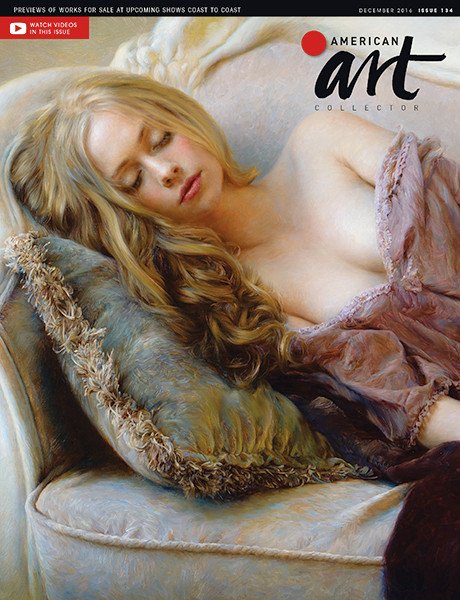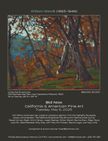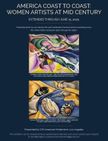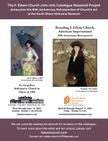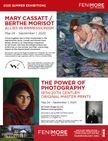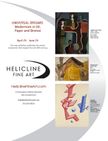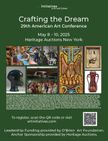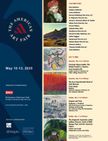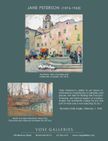When John Singer Sargent arrived in Paris in 1874, he was just 18 years old, but he had already chosen a career in art. Paris was then the center of the art world, and Sargent’s parents and two sisters moved there with him to provide support. As his father wrote, “We flatter ourselves (perhaps it is a parental delusion) that he will make something out of himself more than common.” By the time Sargent left Paris 12 years later, that was no longer in question.
A new exhibition at New York’s Metropolitan Museum of Art called Sargent and Paris, traces his meteoric rise in the crucial decade from 1874 to 1884, from his first appearance in the teaching studio of Carolus-Duran through his infamous portrait of Madame X, which scandalized the Paris Salon. “This 10-year period was one of remarkable discovery and experimentation for Sargent,” says Stephanie L. Herdrich, curator of American painting and drawings at the American Wing of The Met. “It’s this combination of skill, ambition, innocence and boundary pushing that leads him to create some of his boldest, most progressive works.”

John Singer Sargent (1856-1925), Self-Portrait, 1886. Oil on canvas, 139/16 x 1111/16 in. Aberdeen City Council (Aberdeen Archives, Gallery & Museums collection) (ABDAG003876).
In the Met’s exhibition, the range of Sargent’s talents is on full display. Mounted in collaboration with the Musée d’Orsay in Paris to mark the 100th anniversary of Sargent’s death, the show includes iconic portraits, but also lesser-known works—astonishingly good student sketches; rarely seen portraits; paintings from Sargent’s extensive travels through France, Italy, Spain and Morocco; studies for Madame X, and more.
And then there is Paris—or at least, the idea of Paris. Sargent rarely painted the city itself. (In the Luxembourg Gardens was a rare exception.) Instead he focused on Parisian society. In 1874, when he arrived, the city was emerging from the ashes of the Franco-Prussian War (1870-71) and entering the optimistic period that would later be known as the Belle Époque, with its lively cafés, theaters and arts. “The aftermath of the war leaves society more open and fluid,” says Herdrich. “It’s booming with opportunities for studying great art, and there’s a whole new wave of patrons eager to have their portraits painted.”

Left: John Singer Sargent (1856–1925), Madame X (Madame Pierre Gautreau), 1883-84. Oil on canvas, 821/8 x 43¼ in. Metropolitan Museum of Art, Arthur Hoppock Hearn Fund, 1916. Right: John Singer Sargent (1856-1925), La Carmencita (Carmen Dauset Moreno), ca. 1890. Oil on canvas, 903/16 x 551/8 in. Musée d’Orsay, Paris, purchase from John Singer Sargent, 1892 (RF 746).
Sargent had an easygoing personality, and he mingled naturally. His fluency in French, Italian and German didn’t hurt. One contact led to another and another. It started in the teaching studio of Carolus-Duran and rippled out from there. During his time in Paris, Sargent painted many of his friends, including fellow artists Claude Monet, Paul-César Helleu, Ernest-Ange Duez, and sculptor Auguste Rodin, all of whose pictures are in the Met show, along with a lovely portrait of Eugenia Errázuriz, wife of the amateur painter José Tomás Errázuriz. Another unexpected delight is a little-known painting of Sargent’s fencing master, Arsène Vigeant—still a commanding figure in his early retirement, but with his foil now relegated to the corner.
If there is an underlying theme in the Met show, it’s that Sargent was continually pushing the boundaries of portraiture during this period to create works that were daring for their time. A prime example is his 1881 portrait of Dr. Samuel Jean Pozzi, a pioneering surgeon and gynecologist with a reputation as a ladies’ man. Dr. Pozzi at Home is among Sargent’s boldest portraits, with its lush red fabrics and almost theatrical lighting. Viewed through the lens of the 1880s, it was simply shocking. Sargent shows the handsome, bearded doctor in a scarlet dressing gown and Turkish slippers with curtains of crimson velvet behind. With his right hand, he touches the fastening at the top of the robe, while the left rests on the cord around his waist, implying that the gown could be removed at a moment’s notice.

John Singer Sargent (1856-1925), Madame Errázuriz (Eugenia Huici Arguedas), ca. 1883-84. Oil on canvas, 18¾ x 15½ in. Courtesy of Virginia Museum of Fine Arts, donated by James W. McGlothlin as part of the James W. and Frances Gibson McGlothlin Collection of American Art, 2022.181. Photo by Katherine Wetzel.

John Singer Sargent (1856-1925), In the Luxembourg Gardens, 1879. Oil on canvas, 257/8 x 363/8 in. Philadelphia Museum of Art, John G. Johnson Collection, 1917 (Cat. 1080).
Dr. Pozzi was far too intimate a portrait for the Salon, but Sargent found plenty of other progressive paintings to send there. Today it’s fashionable to put down the Salon as stodgy and academic, but Sargent entered it every year starting in 1877 (and for many years after he left Paris). With thousands of paintings and nearly 700,000 attendees over its two-month run, it was the most influential art exhibition in Europe and could still make an artist’s reputation—provided the work was large and striking enough to draw attention. Sargent increasingly created pieces that he knew would be noticed.
Sadly, two of Sargent’s most important Salon entries are not in the Met show—his 1879 Portrait of Carolus-Duran and his 1882 El Jaleo. The former won an honorable mention. But it was El Jaleo—depicting a dramatically lit flamenco performance in Spain—that cemented Sargent’s reputation. It became one of the most talked-about pictures at the Salon that year. Measuring more than 10 feet wide, however, it is too large to travel from the Isabella Stewart Gardner Museum in Boston.

John Singer Sargent (1856-1925), Arsène Vigeant, 1885. Oil on canvas, 201/16 x 20 ½ in. Musée de la Cour d’Or Metz—Eurométropole de Metz. Photo by Laurianne Kieffer.

John Singer Sargent (1856-1925), An Out-of-Doors Study (Paul Helleu Sketching with his Wife), 1889. Oil on canvas, 2515/16 x 31¾ in. Brooklyn Museum of Art, Museum Collection Fund (20.640).
Other important Salon entries are here, though, including Sargent’s masterpiece The Daughters of Edward Darley Boit. If El Jaleo is a virtuoso display of energy among the dancers, the Boit portrait conveys the opposite—a disquieting silence and emotional distance between the four sisters. The painting evokes Diego Velázquez’s iconic Las Meninas (1655), which Sargent had made a student copy of three years earlier. Yet despite the similarities, the Boit portrait is utterly original. “It’s not the typical sweet view of childhood,” says Herdrich. “There’s a complexity to the composition that’s intriguing and mysterious and keeps people coming back and asking questions about it.”

left: John Singer Sargent (1856-1925), Pozzi at Home, 1881. Oil on canvas, 793/8 x 40¼ in. The Armand Hammer Collection, gift of the Armand Hammer Foundation. Hammer Museum, Los Angeles. Right: John Singer Sargent (1856-1925), Margaret Stuyvesant Rutherfurd White (Mrs. Henry White), 1883. Oil on canvas, 885/8 x 565/8 in. National Gallery of Art, Washington, Corcoran Collection; gift of John Campbell White, 2014.136.68.

John Singer Sargent (1856-1925), Ernst-Ange Duez, ca. 1884–86. Oil on canvas, 28¾ x 23¾ in. Courtesy of Montclair Art Museum, Montclair, New Jersey; gift of Dr. Arthur Hunter in memory of Ethel Parsons Hunter, 1962.32. Photo by Peter Jacobs.
Until 1883, Sargent’s career in Paris had been a string of successes. But in 1884 he pushed too far with his portrait of the Parisian celebrity and acclaimed beauty Virginie Amélie Gautreau, the infamous Madame X. Sargent had struggled to find the right pose for her, until one day a jeweled strap on her sleek black gown slipped off her shoulder. Sargent recognized it immediately as the special touch that would make his painting stand out.
When the Salon opened, the portrait indeed stood out—but not in a good way. Hearing the blistering criticism at the Salon, Mme. Gautreau appeared in Sargent’s apartment “bathed in tears.” Sargent himself had to endure the merciless critiques that poured in. The issue wasn’t the exposed flesh. There were many paintings of entirely nude women in the Salon that year that aroused no indignation. The difference was, they portrayed mythological figures, not a flesh-and-blood member of Parisian society. Amélie Gautreau wasn’t just any member of society either. She was an American. Born in New Orleans, she had moved to Paris with her mother to escape the aftermath of the American Civil War. Although she spoke French and married into a wealthy French banking family, she was still seen as an interloper in French society—and one of dubious repute. “The portrait allowed visitors and critics to say things about her they might not have said to her face,” says Herdrich. “The scandal is often boiled down to the strap slipping off her shoulder, as if she was undressing on the walls of the Paris Salon, but it was more than that. People who saw it indicted her vanity and her extensive use of cosmetics, which was seen as artificial.”

John Singer Sargent (1856-1925), The Daughters of Edward Darley Boit, 1882. Oil on canvas, 873/8 x 875/8 in. Museum of Fine Arts, Boston. Gift of Mary Louisa Boit, Julia Overing Boit, Jane Hubbard Boit, and Florence D. Boit in memory of their father, Edward Darley Boit.
The references to antiquity didn’t help. Mme. Gautreau is wearing her signature ornament in her hair—a diamond crescent that harkens back to Diana, the goddess of the hunt. Her pose is suggestive and reminiscent of the unnatural, twisting poses of Mannerist sculptures. And then there are the carved sirens in the legs of the table. “That motif is probably a play on her reputation,” says Herdrich, noting that one of the spiraling table legs seems to extend right up into Mme. Gautreau’s arm and through her body.
Sargent was devastated by the response and was no doubt afraid of losing potential clients over it. After the Salon closed, he famously repainted the strap, moving it up to its proper place atop Gautreau’s shoulder. Years later, he called Madame X “the best thing I’ve done.” It was certainly painting for which he suffered the most. “He poured all his hopes, aspirations and knowledge of art history into it,” says Herdrich. He wanted it to be a smashing success, but instead “it proved to him that to be a portraitist he had to negotiate boundaries.”
Interestingly, he negotiated the boundaries flawlessly in another portrait of a different American in Paris—the wife of the first secretary of the American legation—which he was painting at exactly the same time as Madame X. He had hoped to send the pair of portraits to the Salon together. “If he had, what would the reaction have been?” Herdrich asks. She speculates that the elegant portrait of Margaret Stuyvesant Rutherfurd White—the very model of propriety—might have modulated the outrage and reassured clients that Sargent could be trusted to paint them respectably.

John Singer Sargent (1856-1925), Madame Gautreau Drinking a Toast, 1882-83. Oil on panel, 125/8 x 161/8 in. Isabella Stewart Gardner Museum, Boston (P3w41).
Sargent was not drummed out of Paris over Madame X, as the tale is often told. He remained another two years before moving to London. Although he produced some beautiful pictures in those final two years, the Met show ends with a painting done in New York some four years later called La Carmencita—a portrait of the wildly popular flamenco dancer Carmen Dauset Moreno, whom Sargent called a “bewilderingly superb creature.”
It is a fitting conclusion. Not only was La Carmencita a huge success at the 1892 Salon. It became the first of Sargent’s paintings to be purchased by the French state. It was also the first of his pictures to enter a major museum anywhere, when it was hung in the Musée du Luxembourg. The picture provided what French artist Luc-Olivier Merson had predicted for Sargent after Madame X—not just a comeback, but a “dazzling revenge.” —
Anne Underwood is a longtime writer and editor. She is currently writing a book on the artist William Sergeant Kendall.
April 27–August 3, 2025
Sargent and Paris
The Metropolitan Museum of Art
1000 5th Avenue, New York, NY 10028
t: 212-535-7710
www.metmuseum.org
Powered by Froala Editor
Powered by Froala Editor
